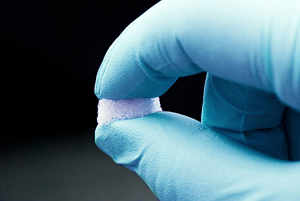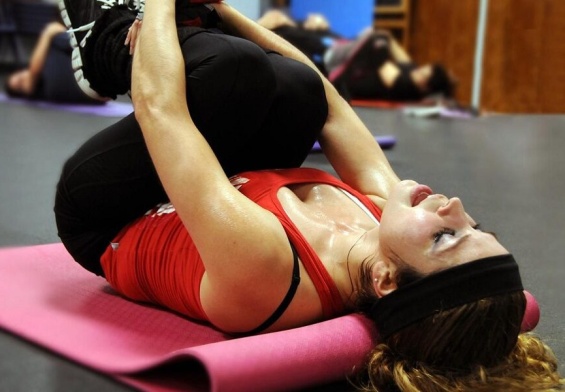 Of all the systems in the human body, undoubtedly the spinal column is one of the most complex. Within this complex structure is an intricate arrangement of vertebrae, discs, nerves, muscles, and ligaments. It’s that complexity that gives the spine its many functions. Of course, it’s also what makes the spine one of the most vulnerable structures in the body. And, even though spine conditions can occur to anyone at any time, especially due to injury, older folks are far more susceptible to degenerative spine conditions, which are medical conditions that develop over time. As we age, our bodies naturally have taken more of a toll as the years have worn on, making each and every one of us more susceptible to suffering conditions of the spine related to the years of stress and burden we’ve endured throughout life. Following is more information from spine specialists in Morristown and throughout the country regarding the most common of these degenerative spine conditions, including osteoarthritis, spinal stenosis, and degenerative disc disease.
Of all the systems in the human body, undoubtedly the spinal column is one of the most complex. Within this complex structure is an intricate arrangement of vertebrae, discs, nerves, muscles, and ligaments. It’s that complexity that gives the spine its many functions. Of course, it’s also what makes the spine one of the most vulnerable structures in the body. And, even though spine conditions can occur to anyone at any time, especially due to injury, older folks are far more susceptible to degenerative spine conditions, which are medical conditions that develop over time. As we age, our bodies naturally have taken more of a toll as the years have worn on, making each and every one of us more susceptible to suffering conditions of the spine related to the years of stress and burden we’ve endured throughout life. Following is more information from spine specialists in Morristown and throughout the country regarding the most common of these degenerative spine conditions, including osteoarthritis, spinal stenosis, and degenerative disc disease.
Common degenerative spine conditions
A degenerative condition is one in which a structure of the body, along with its function, deteriorates over time. This is the reason that degenerative conditions, especially those of the spine, tend to develop as we age. Perhaps the most common degenerative conditions of the spine are spinal stenosis, osteoarthritis, and degenerative disc disease. Millions of people throughout the U.S. suffer from these 3 medical conditions, and many more are diagnosed daily.
Spinal stenosis
Spinal stenosis is a degenerative condition in which narrowing occurs of the spinal canal, which holds the spinal cord. As this narrowing occurs, pain and other symptoms develop due to compression of nerves and spinal cord. Two of the most common types of spinal stenosis include cervical stenosis and lumbar stenosis.
Osteoarthritis
Osteoarthritis is a degenerative breakdown of cartilage of spinal facet joints which can lead to brittle bones. This can then lead to a higher risk of fracturing or breakage of bones, which is the reason many older folks tend to suffer from broken hips or shoulders.
Degenerative disc disease
Degenerative disc disease occurs when intervertebral discs break down. One of the most prevalent types of degenerative disc disease is herniated disc, which occurs when a disc ruptures and leaks into the spinal canal. Another common degenerative disc disease is bulging disc, in which an intervertebral disc becomes compromised and pushes beyond its normal boundaries. Both of these can cause significant pain, and sometimes a surgical procedure is necessary for correction.
Symptoms
The symptoms of degenerative spine conditions vary, depending upon diagnosis. In most cases, pain is involved; however, the level and degree of pain generally depends upon the specifics of the medical condition a patient is experiencing. Other symptoms may include numbness and tingling. And, in less frequent instances, abnormal reflexes, muscle wasting, or even paralysis can occur.
Treatment options
Treatment options for any of these degenerative spine conditions can range from the conservative to the more invasive. Conservative therapies often begin with exercise or physical therapy, again, depending upon the diagnosis. Medications such as naproxen, ibuprofen, or even opioids (for more severe pain) are often a part of the treatment regiment prescribed by a doctor. Less frequently, a healthcare provider such as a spine specialist may recommend a surgical procedure, especially if conservative and less invasive measures have already been tried and have failed. As with any medical condition, the treatment option is often depends upon more than one factor, including the diagnosis, the degree of pain and other symptoms, the progression of the condition, and whether a patient is suffering from any other medical conditions, such as heart disease or diabetes.
Just because we age, doesn’t mean we have to endure any of the common degenerative diseases mentioned here. However, aging definitely does make us more susceptible to suffering from these and other degenerative diseases. The good news is that there are preventive measures we can take to sidestep problems that can occur within the spine as we get older. Maintaining a healthy weight, an active lifestyle, and a nutritious diet are just a few of the important steps you can take to potentially avoiding degenerative spinal conditions. If you’re already experiencing back pain, or you’ve been diagnosed with a degenerative condition of the spine, contact a spine specialist who can present treatment options that can help you get back to your active life.



